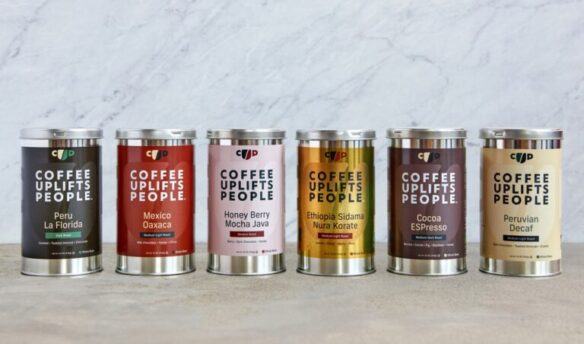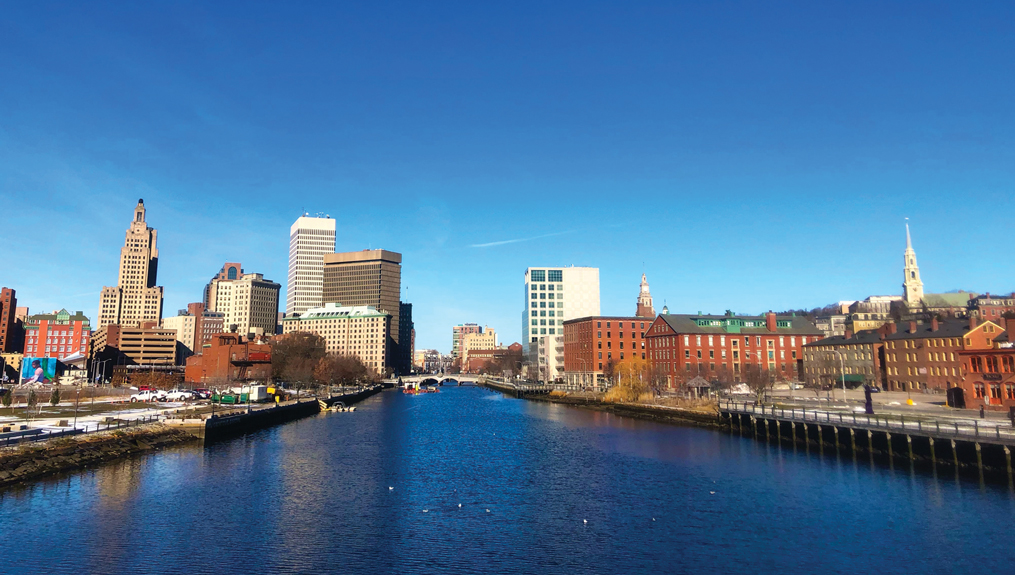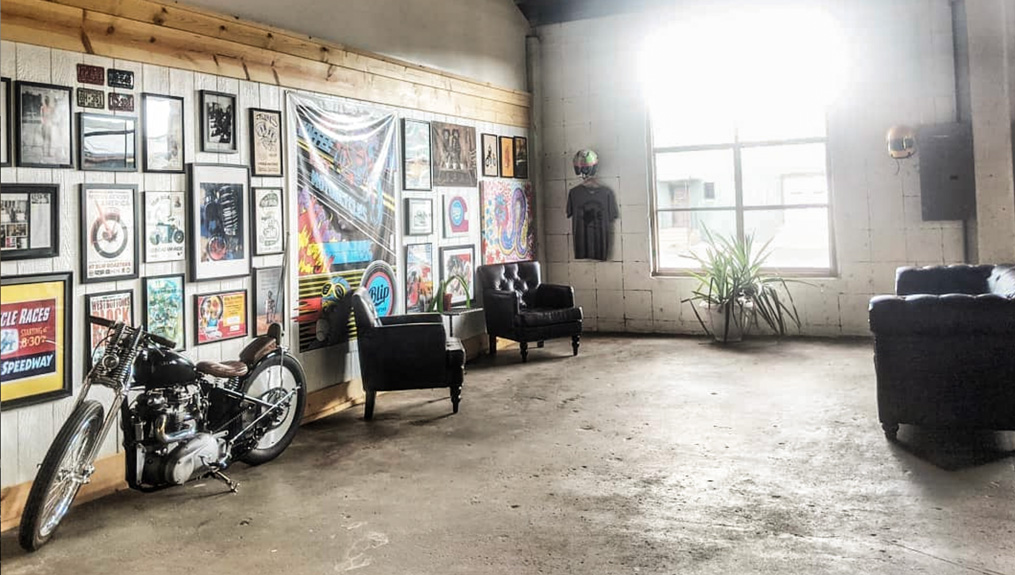[W]alk around Cincinnati’s Over-the-Rhine neighborhood (colloquially known as “OTR”) and you might think you’re in Greenwich Village. The buildings are predominately nineteenth-century Italianate architecture, clad with exterior fire escapes and often decorated by murals. The neighborhood is dense, diverse, and best appreciated as a pedestrian.
“It’s a small community. People support each other,” says Dustin Miller. “Our tattoo guy is right over there,” he says, pointing over one of his shoulders. “Our T-shirt guy is right over there.”
I’m sitting in a courtyard—an alley, really—sharing a Chemex of Ritual’s El Angel, Costa Rica, with Miller and his business partner Dave Hart. Hart and Miller own Collective Espresso, a small coffee shop that’s made a big impact on Cincinnati’s coffee scene.
Calling Collective Espresso “small” is generous. Except for a pair of tables tucked in the front two corners, seating space is limited to the horseshoe-shaped bar. Whether it’s the steady drip of the Japanese cold-brew tower or the copious brewing devices neatly arrayed on the counter, everything is in full view from the stools that line both sides—even the dishwashing station. With the exception of the point-of-sale and the three-group La Marzocco Strada, most of the bar is shared by the baristas and patrons. This layout was designed to maximize transparency, but was also born out of necessity. The single-room space on a largely vacant side street was all Hart and Miller could afford when they opened their doors in the winter of 2012.
“We didn’t know what we were doing,” says Miller.
“…in any facet,” continues Hart.
Collective Espresso was a long time in the making for Hart and Miller. The duo has been collaborating since the eighth grade, when they were assigned to the same science fair project. “We built a solar hot water tower,” says Hart. “We got second place.”

After high school Hart and Miller both left their small Ohio town for other states. Hart attended Oregon Culinary Institute in Portland and Miller studied at Eastern Mennonite Seminary in Virginia. But the two friends stayed in touch and often would dream about opening a restaurant together.
“I always had it in my head that eventually I would give Ohio one more try,” says Hart. When Miller mentioned he was thinking about moving to Cincinnati, Hart was open to moving as well, but with one caveat. “I remember saying I couldn’t live here if I couldn’t get good coffee.”
Hart had developed a taste for specialty coffee while working as a line cook in Seattle. “The restaurant I worked in shared a space with Herkimer’s roastery,” says Hart. “In the restaurant industry the only way to take breaks is a smoke break. I was trying to quit smoking so when everyone else was smoking I would take an espresso break.”
But a café crawl around Cincinnati yielded less-than-promising results. “We went all around trying espresso and didn’t find anything I loved,” says Hart. The two relocated anyway and took jobs at the local Whole Foods, where Hart quickly became the coffee buyer for the store. Through this role Hart came into to contact with regional roasters, like Cincinnati’s Deeper Roots and Louisville’s Quills Coffee. “If I had a day off I would drive to Louisville and have three or four shots of espresso,” says Hart.
As the idea for a café began to percolate, an architect friend showed them the space in OTR, though they were unsure if it was large enough.
In the end, a weekend trip to Toronto, Canada, helped clarify the concept.
“We walked into Sam James Coffee Bar,” says Miller. “It was tiny. There weren’t a lot of frills and I had the best capp of my life and I got it. We came home and rented the space.”
“I always had it in my head that eventually I would give Ohio one more try. I remember saying I couldn’t live here if I couldn’t get good coffee.”
Hoping to highlight a spectrum of specialty coffee, Hart and Miller chose to work with a combination of roasters. Deeper Roots and Quills represented coffee from the region, while roasters like Four Barrel and Madcap introduced Collective’s clientele to more nationally known companies.
The concept is unapologetically coffee-focused. Initially, pour-overs were the only filter option, drinks only came in one size, and flavored drinks were kept to a minimum. For milk drinks, Collective uses Hartzler’s Dairy, a local, independent producer that low temperature pasteurizes grass-grazed milk. “We were introducing this larger coffee culture to Cincinnati,” says Miller.
Collective still holds on to many of those core values, but over time Hart and Miller found it necessary to adapt. Due to popular demand they added autodrip and a sixteen-ounce to-go cup. They also had to learn to stop micro-managing.
“We had one employee for the first year. It was just us,” says Miller. “We worked six days a week.”
“We were so nervous about letting anything out of our hands,” says Hart.

But as the business grew they began to relinquish control to their employees. “We slowly built up a small army of great baristas,” says Miller. “The proudest I’ve been, we went up to Columbus for a throwdown and our baristas got first and second,” says Miller. “They had surpassed us.”
Today, there are two other Collective Espresso locations around Cincinnati and the plans for a stand-alone bakery are in the works, too.
“We don’t have any plans to take over the world,” says Hart. Instead, expansion has been driven by Hart and Miller’s desire to have a positive impact on the city of Cincinnati.
“It’s part of our mission,” says Miller. “‘Curate spaces that enrich their community.’” For the OTR neighborhood, this entails keeping coffee prices affordable and offering healthy lunch options.
Time has seen the OTR location of Collective shift from being a destination coffee shop with a largely barista clientele to a neighborhood institution supported by the people who live and work in the area.
“We still want to be on the cutting edge,” says Miller, “but we’re a neighborhood cafe.”
What hasn’t changed, however, is Hart and Miller’s commitment to quality. “Our clientele demands better coffee,” says Miller. “They continue to push us.”
—Michael Butterworth is the founding editor of the Coffee Compass.
















